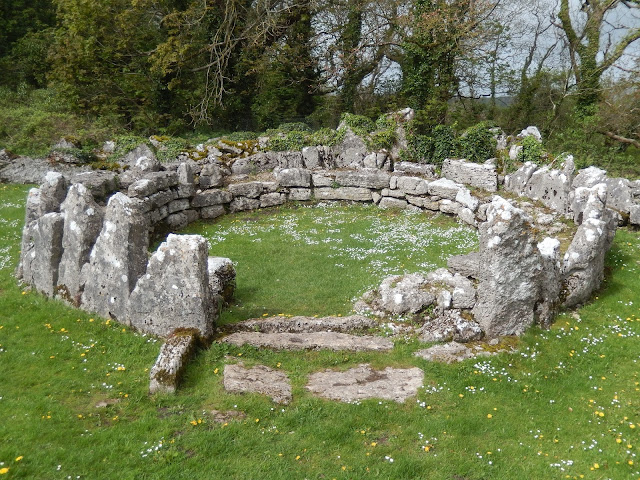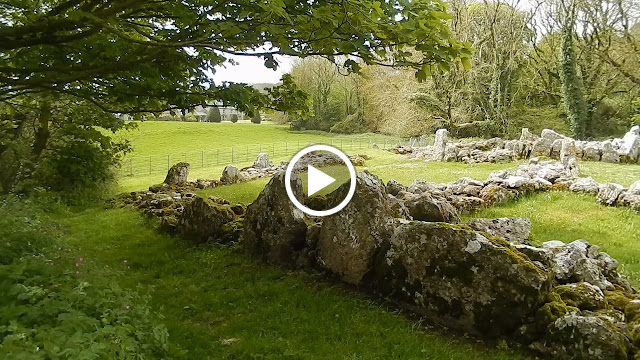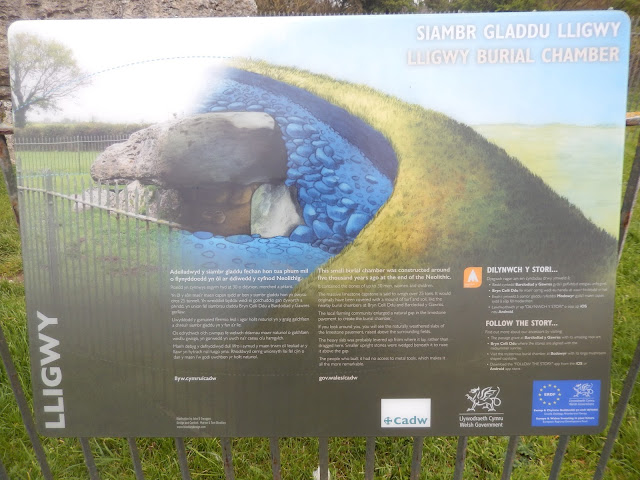Haia Pawb
Today I was to leave Ynys Môn and drive up to Scotland for the next stage of my research trip. However, before leaving the island, I planned to visit the complex at Lligwy, which comprised a prehistoric burial chamber, a Roman-British farmstead (Din Lligwy) and the remains of a medieval chapel, Capel Lligwy. I planned to focus on the farmstead, as it might help me with some scenes set in a similar environment, though at a later stage than the Roman occupation of Ynys Môn.
 |
| Path to the settlement, with wildflowers |
 |
| Information board |
 |
| Video of the site |
 |
| Artist impression of the settlement |
I enjoyed my time, largely on my own, wandering around the farmstead. I measured out and sketched the layout of the site and its various buildings, something I hadn’t done at other sites and now kicked myself for not doing those times. As I did this, under a cloudy sky and in a coolness that refreshed, I felt quite grounded and content, the place and the work being what I was meant to do.
 |
| One of the roundhouses |
 |
| Another video |
I might be able to use the layout as a foundation for the plan for the Iron Age village in the beginning of my novel. I quite like the idea of a pentagon-shape for the village, five being one of the sacred numbers of the Celts.
 |
| Layout of the settlement |
Given that my central character is connected to blacksmithing, the artist’s impression of the smithy in the site gave me a few ideas about structure, size, etc. The smithy itself was set in
the ground, as if one is stepping into the earth, towards the darkness of the forge
, towards the Otherworld, when engaging in the magical work of creating tools from molten iron.
 |
| View of surrounding area taken during the walk to the settlement |
I then moved onto the tomb. The small structure, made from quite large rocks, is set deep into the ground. After a moment’s meditation, I crawled inside and sat silently on the packed dirt floor contemplating my novel and listening to the whispers of the Atlantic wind.
 |
| Information board at the site |
 |
| The tomb |
 |
| View of the tomb from the other side |
 |
| Inside the tomb |
My reveries was cut short by a plane overhead:
 |
| Fuzzy shot of RAF planes on their training run |
inside the ancient tomb
dirt and silence
scream of fighter jet
As my novel is set centuries before the medieval period, and time was running out, I didn’t investigate the chapel, except for taking some distant photos.
 |
| Capel Lligwy |
That’s it for now. As always, I hope you’re enjoying these posts and I welcome any comments.
Cofion Cymes
Earl














